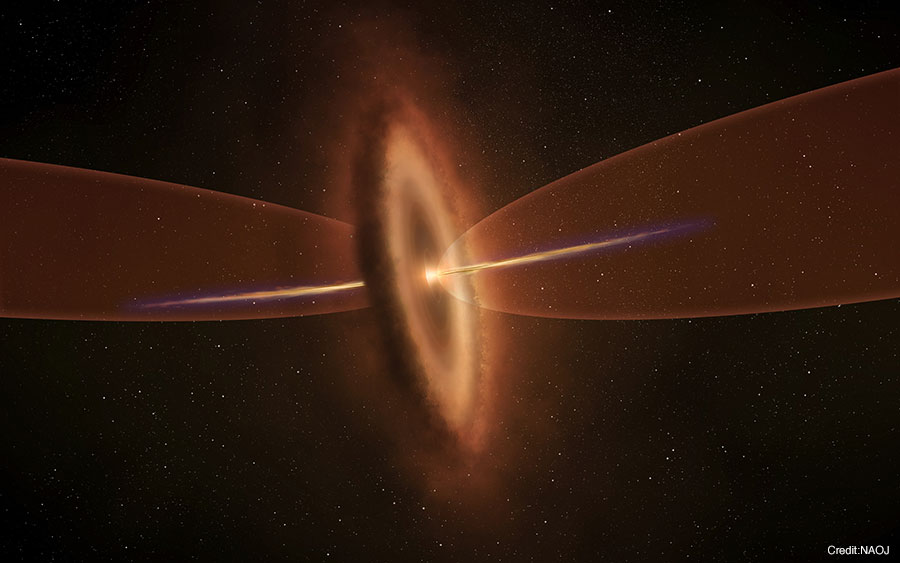Two-Gun Baby Star Solves Stellar Mystery
| Science

Astronomers have discovered two streams of gas shooting out from a baby star that originated at different times and areas. This supports a two-gun model where the streams are launched independently, settling a long running debate about the formation mechanism. This is an important clue for understanding star formation.
Stars form by amalgamating interstellar gas. In the early stages of star formation a baby star, known as a protostar, is surrounded by a disk of gas. This gas spins down into the center, feeding the growing protostar. But not all of the gas ends up in the star. Some of it is shot back out. There are two kinds of gas streams ejected from protostars, high-speed collimated jets and low-speed, wide-angle outflows. Astronomers have long wondered whether the high-speed jet kicks-up the surrounding gas causing the broad outflow or if the jet and the outflow are independent.
Yuko Matsushita, a graduate student at Kyushu University, and her team used ALMA (Atacama Large Millimeter/Submillimeter Array) to observe a protostar known as MMS 5 in Orion Molecular Cloud 3 (OMC-3) and found both a fast jet and a slow outflow. They also found that the directions of the jet and the outflow are misaligned by 17 degrees. By measuring the sizes and speeds of the gas streams, they could work backwards to calculate their ages. The jet started 500 years ago and the outflow started 1300 years ago.
Matsushita explains, “If the protostar had wobbled while emitting the gas streams, the directions could be different, even if they came from the same phenomenon. But in MMS 5, the jet and outflow began so recently that there hasn’t been time for the protostar to wobble. Furthermore the outflow started before the jet, making it unlikely that the jet could cause the outflow.”
These results were published as Matsushita et al. Matsushita et al. ‘A Very Compact Extremely High Velocity Flow toward MMS 5/OMC-3 Revealed with ALMA’ in the Astrophysical Journal in February 2019.